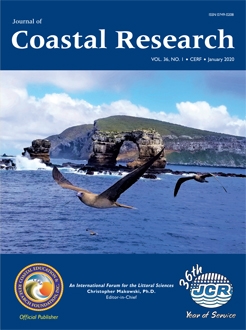Almarshed, B.; Figlus, J.; Miller, J., and Verhagen, H.J., 2020. Innovative coastal risk reduction through hybrid design: Combining sand cover and structural defenses. Journal of Coastal Research, 36(1), 174–188. Coconut Creek (Florida), ISSN 0749-0208.
Worldwide, sand dunes and hard coastal structures help to minimize loss of lives and property from storm impact and flooding along or behind coastlines. Both sand dunes and hard coastal structures have their benefits and shortfalls in terms of protective capacity, cost, flexibility, and impact to coastal systems. Combining these two inherently different coastal risk reduction measures into a single hybrid system can preserve some of the individual benefits of each while creating an Engineering-with-Nature™ system that fulfills the requirements of high levels of protection, adaptability to future challenges related to climate change, sustainability, and pleasing natural aesthetics. Although such hybrid systems have the potential to become viable alternatives to conventional coastal risk reduction schemes, there are still many unknowns related to the interaction between the soft and hard structural components and their effectiveness in storm surge mitigation and flood prevention that require targeted research efforts to create acceptable design guidelines. Specifically, the combination of hard and soft alternatives into a single structure has not been studied in detail. Here, hybrid coastal risk reduction systems consisting of traditional hard structures (levees, revetments, and sea walls) covered by sand layers attempting to mimic dunes are investigated. It is emphasized that these sand covers can look like natural dunes, but they cannot evolve like natural dunes in the long term due to spatial constrictions along developed coasts and lack of natural sediment supply in eroding coastal systems. Just like any engineered beach and dune system, these hybrid structures require episodic maintenance nourishment, particularly after storm impact. The present overview covers design advances and issues related to both hard structures and engineered sand dunes for coastal risk reduction and investigates existing hybrid approaches. Future research goals to better understand hybrid coastal risk reduction systems and to create applicable design guidelines are discussed.





